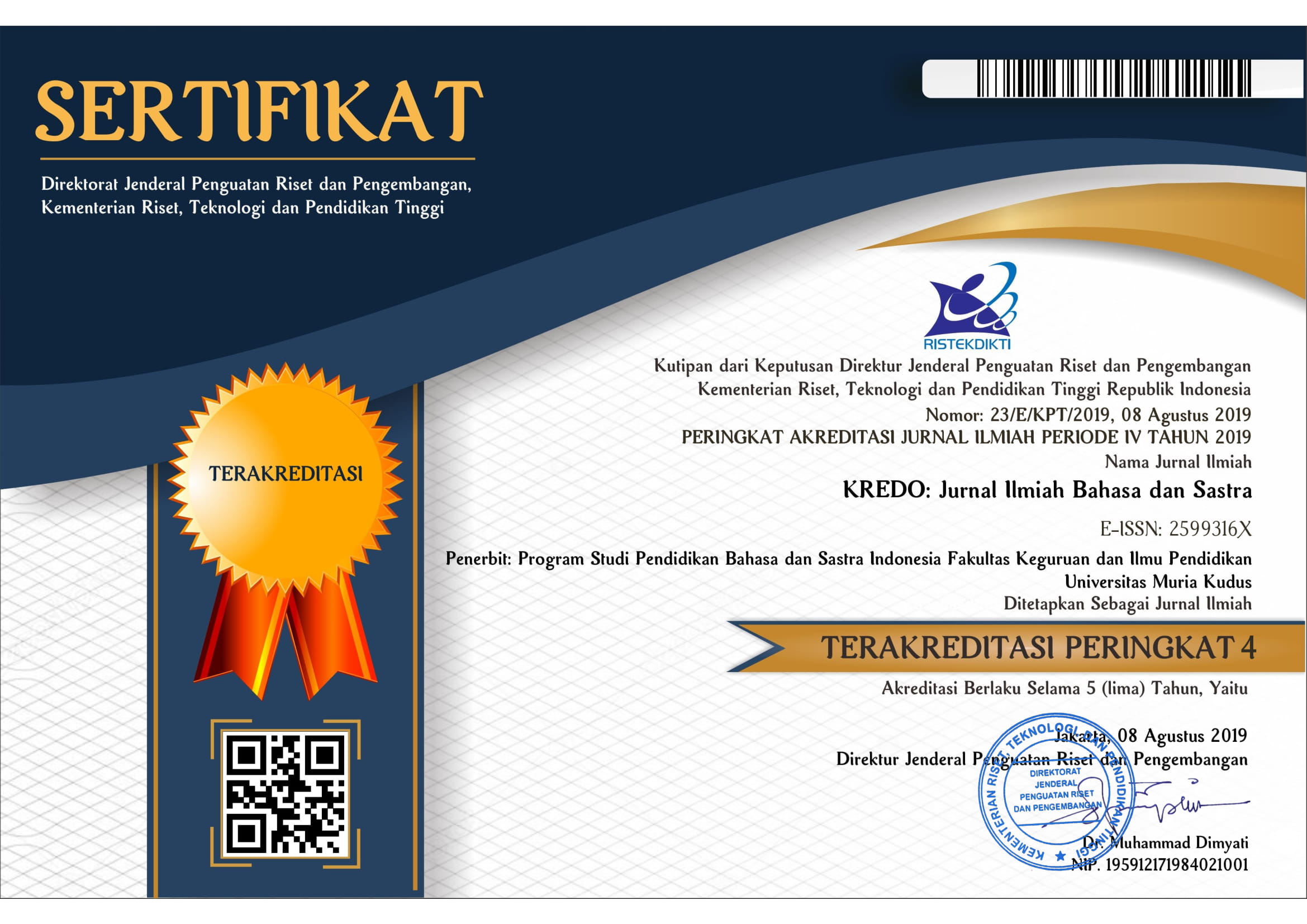Code Mixing Between Sellers and Buyers in Traditional Stalls
Abstract
Penelitian ini memfokuskan pada penggunaan campur kode yang terjadi dalam kehidupan masyarakat ketika terjadi transaksi antara penjual dan pembeli di warung tradisional, khusunya menjual makanan dan minuman dengan intensitas kunjungan tinggi setiap hari. Penelitian kualitatif ini mengambil data dialog antara penjual dan pembeli untuk menemukan pilihan campur kode yang digunakan. Lokasi penelitian dilakukan di kotamadya Denpasar dan kabupaten Badung karena dengan pertimbangan intensitas terjadinya interaksi jual beli sangat tinggi. Metode yang digunakan adalah observasi dengan teknik pengumpulan data menyimak, mencatat dan merekam setiap dialog yang terjadi, didukung dengan wawancara mendalam kepada 20 pedagang di masing-masing lokasi penelitian. Setelah data diperoleh, diklasifikasikan kemudian dianalisis menggunakan teknik kontekstual. Hasil analisis dideskripsikan menggunakan Teknik analisis secara informal. Hasil penelitian membuktikan bahwa pada interaksi jual beli di warung tradisional telah menerapkan tiga jenis campur kode. Campur kode ke Luar (outer code mixing) digunakan ketika penjual tidak memiliki padanan kata yang tepat untuk suatu topik. Sedangkan campur kode ke dalam (Inner Code Mixing) karena adanya pengaruh bahasa daerah dengan melihat status sosial mitra tutur dengan mempertimbangkan adanya stratifikasi masyarakat secara tradisional maupun modern. Serta dalam satu konteks, memungkinkan adanya penggunaan Campur Kode campuran (hybrid code mixing) yang dipengaruhi oleh faktor sulitnya mencari padanan yang tepat, kosakata lazim diketahui oleh banyak orang, humor, topik pembicaaran, mendekatkan jarak diantara peserta tutur yang sangat ditentukan oleh konteks situasi tuturan.
This research focused on the used of code mixing that occured in people's lives on transactions between sellers and buyers in traditional stalls, especially selling food and drinks with high intensity of visits every day. This qualitative research took data from the dialogues between the sellers and the buyers to find the choice of code mixing used. The location of the research was carried out in the municipality of Denpasar and Badung district because of the very high intensity of buying and selling interactions. The method used was observation with data collection techniques of listening, recording and recording every dialogue that occurs, supported by in-depth interviews with 20 traders in each research location. After the data were obtained, they were classified and then analyzed by using contextual techniques. The results of the analysis were described in an informal analysis technique. The results of the study proved that the interaction of buying and selling in traditional stalls has implemented three types of code mixing. Outer code mixing was used when the seller did not have the right equivalent for a topic. While the internal code mixing (Inner Code Mixing) was due to the influence of the regional language by looking at the social status of the speech partner by considering the traditional and modern stratification of society. And in one context, it was possible to use hybrid code mixing which is influenced by the difficulty of finding the right equivalent, vocabulary commonly known by many people, humor, the topic of conversation, closing the distance between speech participants which is largely determined by the context of the speech situation.
Keywords
Full Text:
PDFDOI: https://doi.org/10.24176/kredo.v6i1.8913
Article Metrics
Refbacks
- There are currently no refbacks.
In Collaboration With:
This work is licensed under a Creative Commons Attribution-NonCommercial-ShareAlike 4.0 International License.








